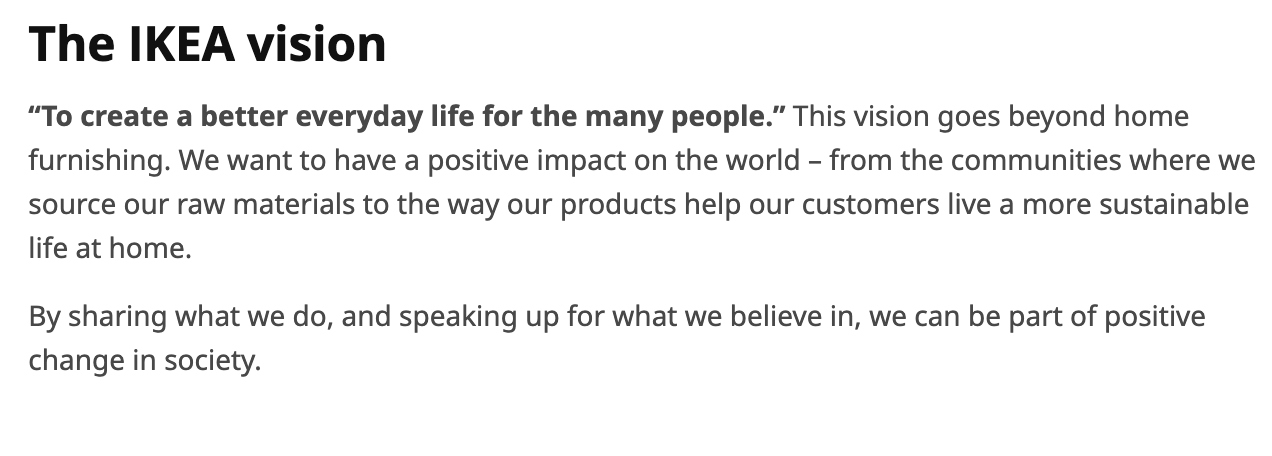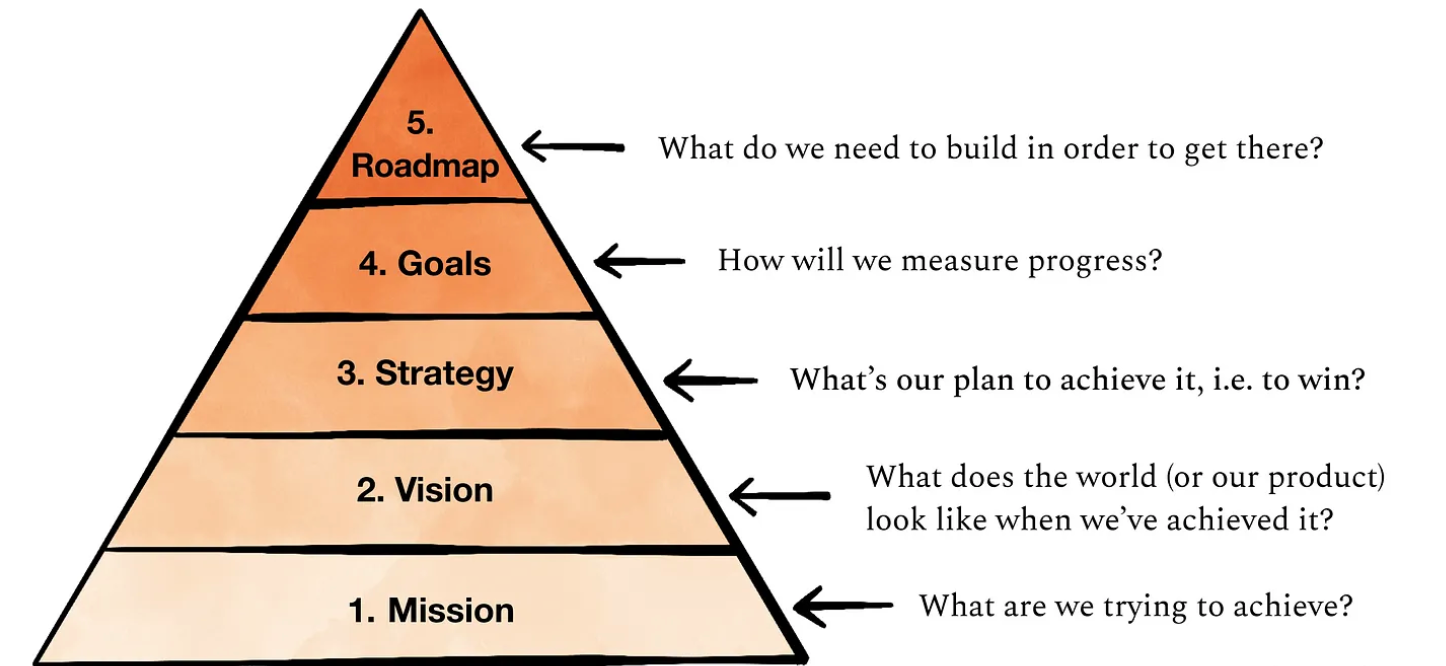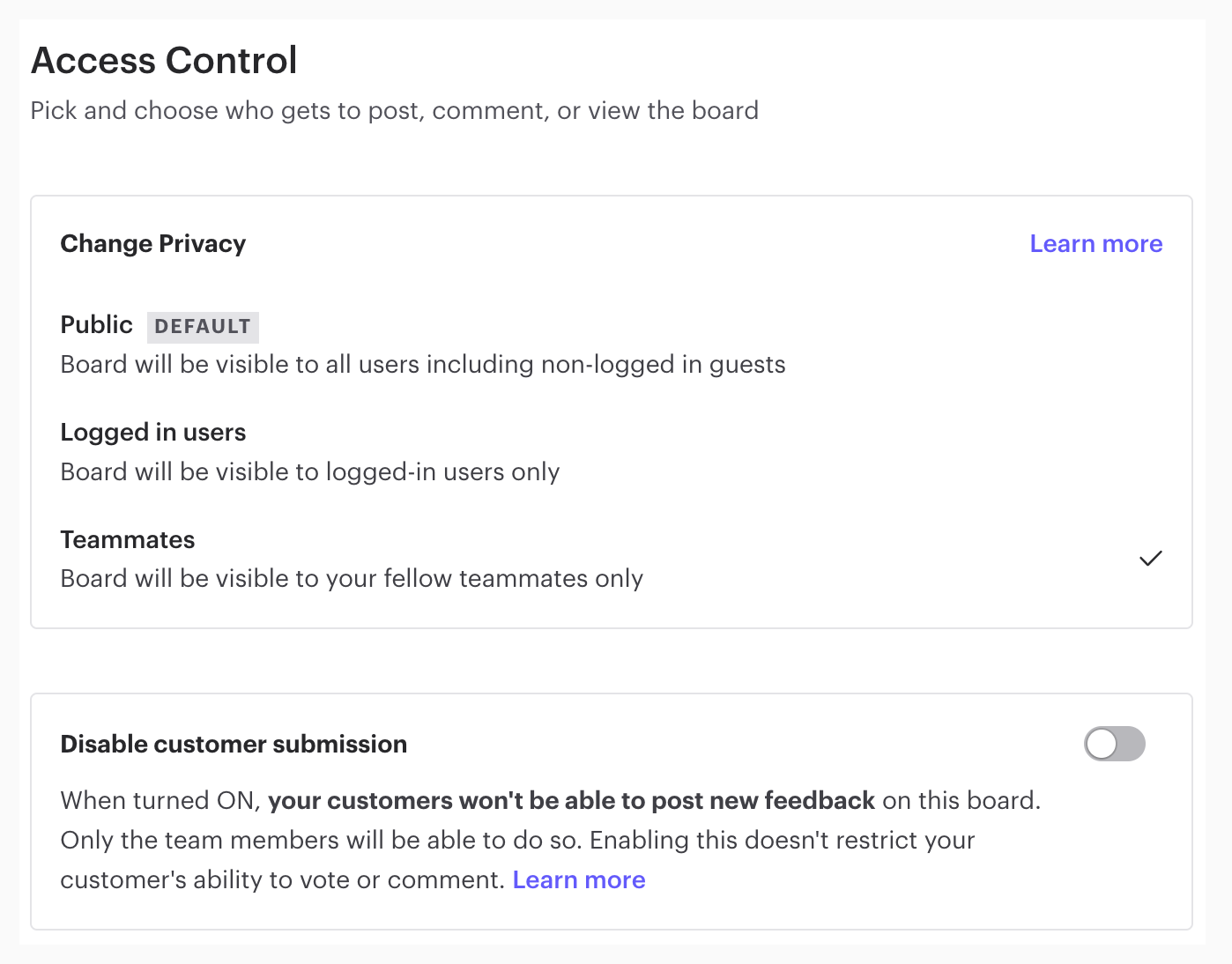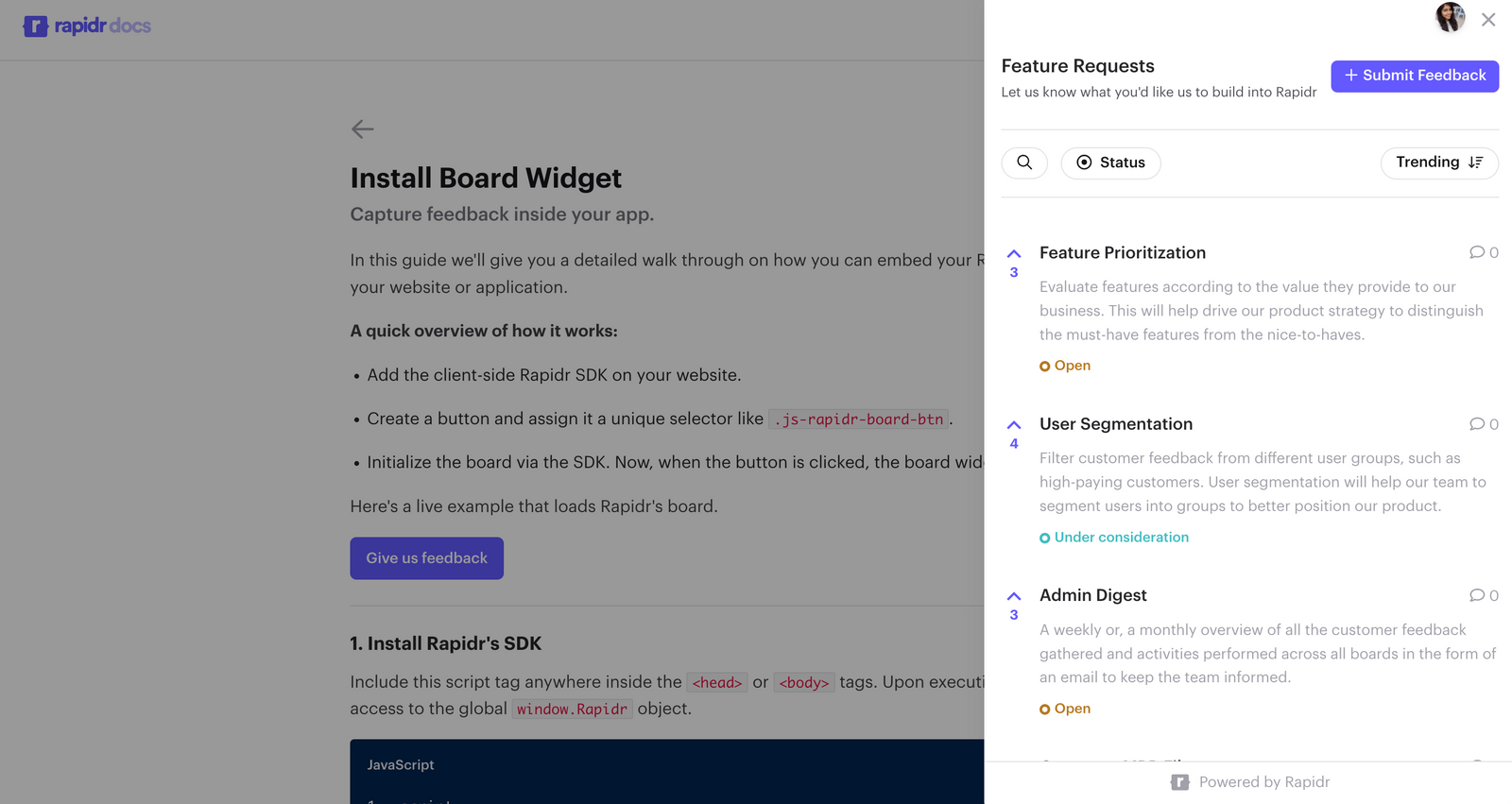
How to Create an Effective Product Vision & Why Is It Important (Steps & Examples)
Every successful journey begins with a destination in mind, and the realm of product development is no different.
An effective product vision is a guiding star, aligning all stakeholders and efforts toward a common end goal. It's not just about what you aim to build but how this creation will shape the world. It encapsulates the essence of what the product strives to be and the impact it aims to have.
But crafting a compelling and actionable product vision is an art, a delicate blend of foresight, ambition, and a grounded understanding of the market landscape.
In this blog post, we will discuss how to create a robust product vision, explain its strategic importance, and provide a roadmap to help you navigate the process. Whether you're a seasoned product manager or just starting out on the product leadership path, join us as we explore why the product vision matters and how to create a product vision statement.
What is Product Vision?
A product vision statement is a concise and inspiring declaration that describes a product's long-term goal or desired future state. It captures the essence of what the product aims to achieve, its purpose, and the value it intends to deliver to customers and stakeholders.
What is a product vision statement? A well-crafted product vision statement provides guidance, alignment, and inspiration for the product team throughout the product development process.

Who writes/owns the Product Vision Statement?
The product vision statement is typically crafted by the product manager and product owner, often in collaboration with the leadership team and key stakeholders.
Product managers play a pivotal role because they have a deep understanding of the customer's needs, the market landscape, and the product's capabilities. However, creating a product vision should be a collaborative process that involves key stakeholders. This is important because a product vision needs to align with the broader corporate strategy and goals.
Involving other team members, such as those from sales, marketing, engineering, and customer service, can also be valuable. Their diverse perspectives can bring unique insights into customer experience and satisfaction, technological feasibility, and market trends, contributing to a well-rounded and effective product vision.
Once the product vision statement is drafted, it is shared across the organization to ensure everyone understands and aligns with the product's future direction.

Why do you need a Product Vision Statement?
A product vision provides the product team with clarity, focus, and motivation. It aligns stakeholders, guides decision-making, and helps build a product that meets customer needs, differentiates itself, and achieves long-term success in the market. A product vision is crucial for several reasons:
- Direction and Focus: A product vision provides clear direction and focus for the product team working towards the same goals, minimizing confusion and miscommunication. It sets the long-term goal and desired future state, guiding decision-making and prioritizing efforts.
- Decision-Making Framework: The product vision is a framework for making strategic decisions and prioritization. When faced with choices or trade-offs, the vision statement helps evaluate options based on their alignment with the desired outcome, customer value, and differentiation. With a well-defined vision, it becomes easier to prioritize features and tasks, ensuring that resources are allocated to the most important aspects of the product.
- Stakeholder Alignment: A well-communicated product vision statement helps align stakeholders, including executives, investors, marketing, sales, and development teams. It provides a shared understanding of the product's purpose, target market, and differentiation, enabling collaboration and support across the organization.
- Motivation and Inspiration: A compelling product vision inspires and motivates the product team. It articulates the positive impact the product aims to make, creating a sense of purpose and excitement. A strong vision encourages creativity, innovation, and persistence in overcoming challenges.
- Customer-Centric Approach: A product vision statement reminds the team of the customer-focused objective and promotes customer-centric culture. It ensures that the product's development and features are driven by customer needs, solving their pain points and delivering value. It helps avoid building features without a clear purpose or customer benefit.
- Adaptability and Flexibility: While a product vision sets a long-term goal, it should also allow flexibility and adaptation. Market conditions, customer preferences, and technology evolve. The product vision acts as a guiding star, allowing room for adjustment and iteration based on feedback and changing circumstances.
- Competitive Advantage: A well-defined product vision helps establish a unique positioning and differentiation in the market. It enables the team to build a product that stands out from competitors by addressing unmet needs or delivering superior value. It helps create a competitive advantage and drives market success.
- Long-term success: An effective product vision guides the team through the development process, making it easier to make informed decisions and adjust the product as needed, ensuring long-term success and adaptability.
Examples of Product Vision Statements
A product vision statement encapsulates the overarching goal or aspiration of a product. These vision statements provide a long-term strategic direction and describe the companies' goals. They are all ambitious and customer-oriented and serve as guiding stars for their products. Here are a few product vision examples from some well-known companies:
- Square: “Make commerce easy.”
- Tesla: "To create the most compelling car company of the 21st century by driving the world's transition to electric vehicles."
- Slack: "To make work life simpler, more pleasant, and more productive."
- LinkedIn: "To connect the world's professionals to make them more productive and successful."
- Spotify: "To unlock the potential of human creativity—by allowing a million creative artists to live off their art and billions of fans the opportunity to enjoy and be inspired by it."
- Amazon: "To be Earth’s most customer-centric company, where customers can find and discover anything they might want to buy online."
- Google Search: "To organize the world's information and make it universally accessible and useful."
- Nike: “Do everything possible to expand human potential.”
How to Write and Develop an Effective Product Vision?
Developing a compelling product vision is essential for the success of any product, as it serves as a guiding force for all stakeholders involved in the development process.
It creates a shared understanding of what the product is meant to achieve and helps the team make informed decisions throughout the product's lifecycle. Here's how to develop an adequate product vision and why it matters:
Define the Problem
Start by identifying the core problem your product aims to solve. Understand your target audience and their pain points. Conduct thorough research, surveys, and interviews to understand their needs and preferences. To define the problem:
- Identify your target users: Understand who your users are and their characteristics, preferences, and behaviors. Developing user personas can help with this.
- Understand user needs and pain points: Talk to your potential users, conduct surveys, or use other research methods to identify the challenges or difficulties they are facing that your product could solve.
- Evaluate the current solutions: Look at how your potential users deal with the problem. This could involve using a competitor's product or a completely different method. Understanding this can help you see how your product can provide a better solution.
- Define the problem statement: Formulate a clear and concise problem statement based on your findings. This should succinctly describe the problem your users are facing, who the users are, and why the current solutions are insufficient.
A well-defined problem statement will help guide your product vision. It will serve as a foundation for deciding what your product aims to achieve and how it can create user value.
Establish Clear Goals
Set specific, measurable, achievable, relevant, and time-bound (SMART) goals for your product. These goals should align with the organization's objectives and focus on solving the identified problem. Ensure your product vision aligns with your company's broader business goals. Your product should contribute to the company's mission and strategic objectives.
Keep it Concise and Clear, and Be Inspirational
A good product vision is concise, clear, and easy to understand. It should be able to be communicated quickly and easily to anyone. A product vision should be motivational. It should inspire your team and stakeholders to work towards a common goal
Craft a Compelling Product Vision Statement
Crafting a compelling product vision statement requires a clear understanding of your product's purpose, its target audience, and how it will make a unique impact in the market.
Develop a concise and inspiring vision statement that communicates the essence of your product. This statement should describe the product's purpose, the target audience, and the desired impact on users' lives.

Identify Your Product's Unique Value Proposition
What makes your product unique? How is it different from existing solutions? This uniqueness should be incorporated into your vision statement. Determine the core features and unique selling points of your product. Focus on the aspects that set it apart from competitors and address the needs of your target audience.
Create a Product Roadmap
While a product roadmap doesn't create a product vision, it's a critical tool that outlines how a product or solution will evolve to achieve that vision. In other words, if the product vision is the "why" and the "what," the product roadmap is the "how" and "when." It provides a strategic context for your team and stakeholders, detailing the sequence of steps or milestones needed to realize the vision.
Develop a high-level plan that outlines the key milestones, features, and deadlines for your product's development. This roadmap should be flexible and adaptable, allowing for adjustments as new information and feedback are gathered.
Rapidr offers a public product roadmap that lets you showcase prioritized ideas and features, customer and team feedback received, most voted and highly discussed ideas, and their respective statuses. Think of it as a high-level plan of action that informs teams of what needs to be done and keeps stakeholders in the loop.
Involve Stakeholders
Product vision isn't something to be decided by the product manager or executive team alone. Involve your team in its creation. This will give you a broader range of ideas and help ensure buy-in from the team.
Throughout the process, engage with stakeholders, such as customers, team members, and investors. Gather feedback, address concerns, and ensure everyone understands the product vision and their role in achieving it.
Rapidr offers private feedback boards to validate product vision with a limited group of customers. This service also supports your product's prototyping and testing stages.

Rapidr also offers internal feedback boards to test ideas and product vision within your internal team and in-app feedback widgets for collecting feedback on new features and product vision.

Communicate Product Vision
Regularly communicate the product vision to the team, stakeholders, and customers. This helps maintain alignment and enthusiasm and ensures everyone is working towards the same goals.
Use real-time feedback tools like Rapidr, which provides a product changelog, to announce product updates, increase feature awareness, and communicate the product vision to teammates and customers.

Validate and Iterate
Just like your product, your product vision will need to be validated. Test it against real-world constraints and customer expectations, and be ready to iterate on it as necessary.
Get Feedback and Iterate. Once you've crafted a vision statement draft, get feedback from your team, stakeholders, and potentially even users. Use the feedback to refine the statement.
Rapidr provides customer feedback portals to collect different types of user feedback to identify customer pain points, problems, and features required to build the ideal product and refine product vision.

Continuously evaluate the progress and success of your product against the established goals and vision. Make adjustments as necessary to ensure the product remains aligned with the vision and continues to meet user needs and expectations.
Build Remarkable Products With Effective Product Vision Statements
Crafting a compelling product vision is pivotal to the success of any product. It provides the north star for your team, guiding decision-making and inspiring all those involved. The product vision not only speaks to what the product aims to achieve but also the deeper purpose and impact it strives to create in the customers' lives and in the world.
Understanding your target users, clearly defining the problem your product aims to solve, setting SMART goals, crafting a compelling vision statement, and creating a strategic product roadmap are critical steps. These components work in unison to guide your product's journey from conception to market. While they provide a clear path forward, they are not set in stone and should evolve as you gather more data, user feedback, and insights about your market.
With Rapidr, you won’t have to worry about missing out on user feedback. It helps SaaS companies set up a dedicated place to track different types of customer feedback, understand what customers need, prioritize what to build next, and refine their product vision. Sign up to refine and develop your product vision with customer feedback.
Remember, a compelling product vision is more than just a lofty statement or a strategic document; it's the heart and soul of your product. It should inspire your team, resonate with your customers, and differentiate you in the market. So, invest the time and effort it deserves, and you'll be well on your way to building a product that truly stands out.

